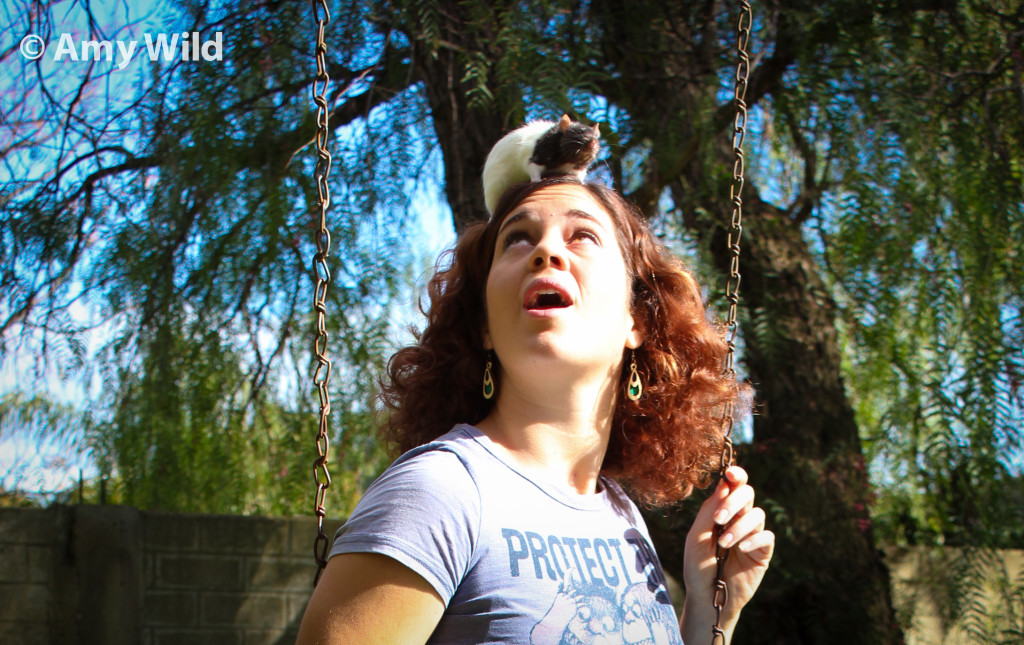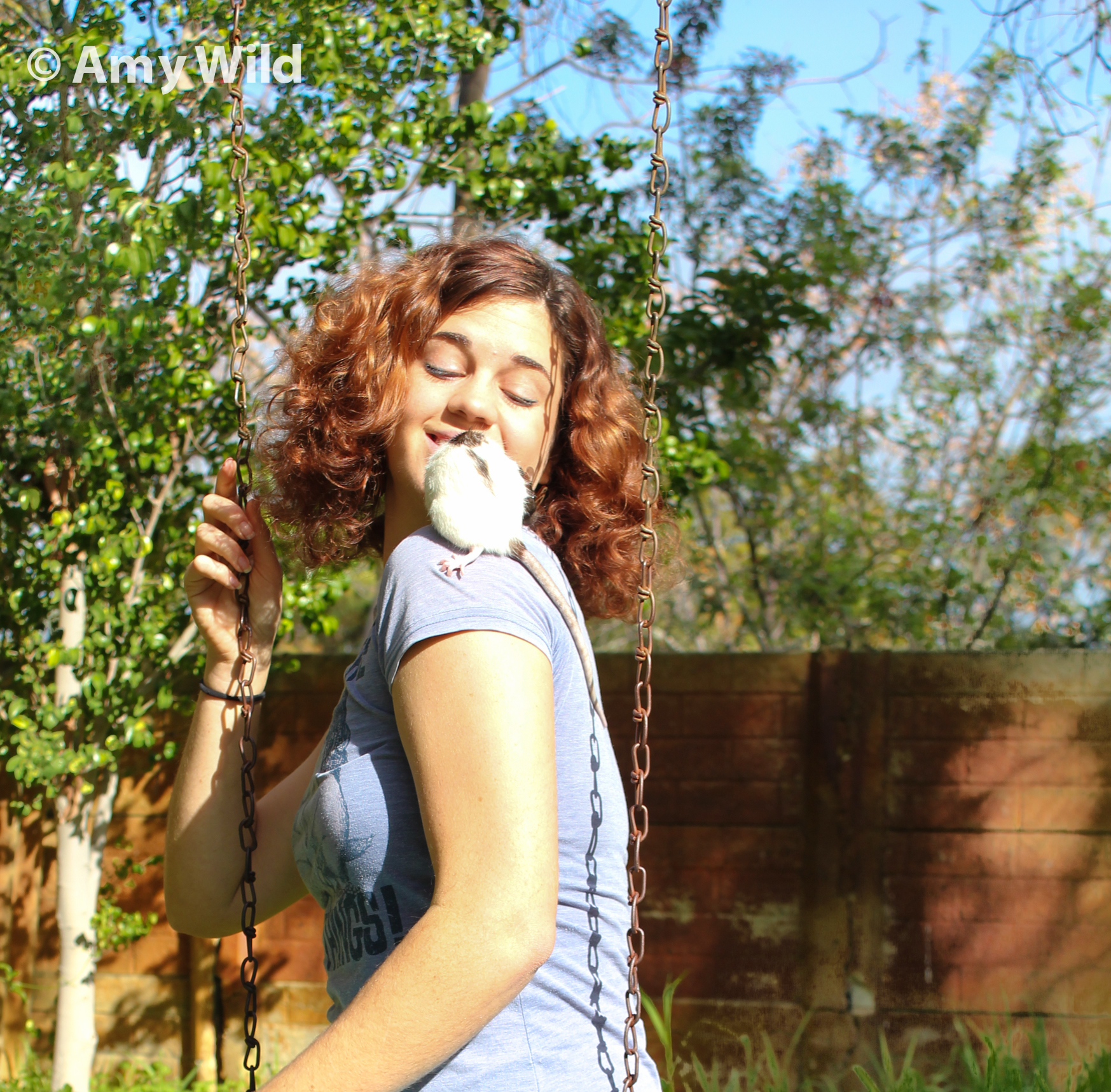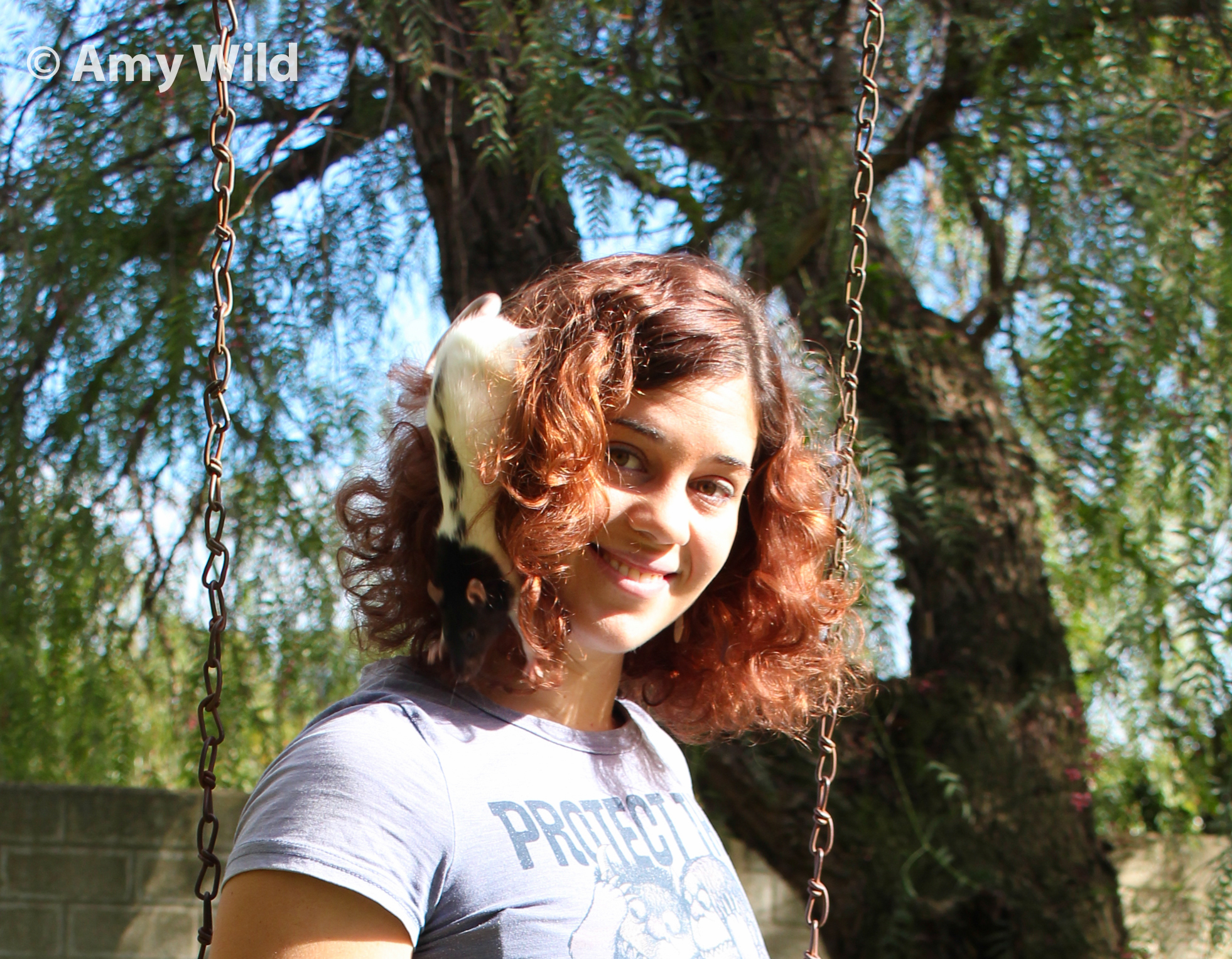This is my dear pet rat, Pi. Rats are another of those animals who I feel receive far more negativity on a personal level than they deserve. You shouldn’t miss out on one of the most entertaining, affectionate and low maintenance pets in the world, based on an old-fashioned attitude!
It is true that of the 60+ rodent species in Australia, one mouse and two rat species are non-native and indeed considered terrible pests. The most wide-spread rat species in Australia is the Black Rat, Rattus rattus. The other is the Brown Rat, Rattus norvegicus. While these are a pest they are less prevalent in Australia, being less inclined to climb than Black Rats. Undisturbed, Brown Rats live in ‘family’ or pack burrows. Due to their highly intelligent nature, including an excellent memory (used in the wild to recall complex routes to areas with the best foraging), Brown Rats are also the species used globally in endless psychology and other lab experiments — and the species favoured as pets!
It is true that rats have the capacity to carry diseases when they are exposed to them. But this could be said of most species. It is their great adaptability to human society, and their habit of following human settlements, that have both exposed them to disease and facilitated their spread of it among humans in the past.
But as a pet, you could not find a better (or cleaner) companion. They groom more frequently than a cat, can swim like a dog, and have the perfect blend of a cat’s independence and a dog’s sociability. Once bonded to you, you will find your companion readily embarking on adventures; but always returning to you now and then to make sure you’re still there. And when sleepy, yours will be the shoulder that will become bed, and the neck that is snuggled up to on a cold day. They are easily house trained, and trainable in many other areas too – Pi is quickly becoming a master in food manners, knowing already that begging and stealing from the plate are a quick means to losing out on any more treats! They have an endless sense of curiosity in all things that I find irresistible. And with a captive life span of about three years, they do not represent the commitment larger animals do. Furthermore, they eat everything (but don’t feed any rodents cheese – dairy is very bad for them!!) and can be kept healthy on a similar diet to humans… Except perhaps with a few more seeds, as they are granivores before omnivores.
So think twice before you buy into a habitual cultural attitude of fear and hate… And look at these photos!
Stay Wild!!
For more info on pet care for rats (and mice), visit http://www.afrma.org/caresheet.htm
For more info on Brown Rats, visit http://animaldiversity.ummz.umich.edu/accounts/Rattus_norvegicus/
And for more on the Black Rat, go to http://www.ecosmagazine.com/view/journals/ECOS_Print_Fulltext.cfm?f=EC12344






